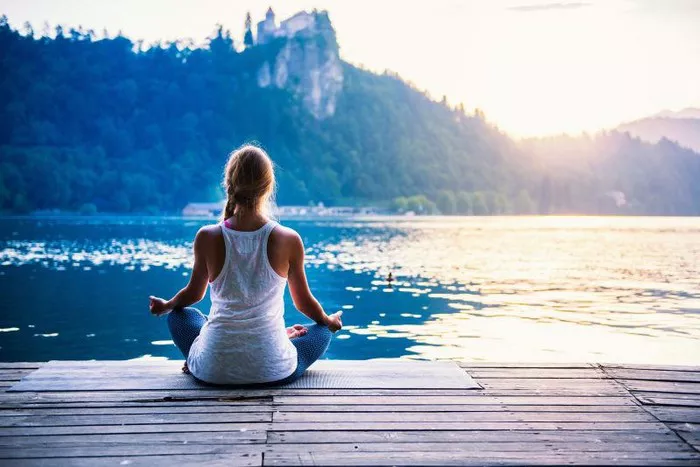Ashtanga yoga, a dynamic and structured style of yoga, is deeply rooted in tradition and spiritual philosophy. This practice, often associated with the teachings of Sri K. Pattabhi Jois, follows a specific sequence of poses and breathwork designed to build strength, flexibility, and mental clarity. One of the defining aspects of Ashtanga yoga is the traditional practice of performing it in the morning. In this article, we will explore why Ashtanga yoga is traditionally done in the morning, drawing on both physical, psychological, and spiritual perspectives to provide a comprehensive understanding of this practice.
Understanding Ashtanga Yoga
Before diving into the specifics of why Ashtanga yoga is traditionally practiced in the morning, it’s important to have a basic understanding of what Ashtanga yoga entails. Ashtanga is a comprehensive system of yoga that includes eight limbs, or “ashta” (eight) and “anga” (limbs), of which physical postures (asana) and breath control (pranayama) are the most commonly practiced aspects in modern times. Ashtanga yoga involves a set sequence of postures that are performed in a specific order, typically classified into Primary, Intermediate, and Advanced series.
The practice is characterized by synchronization of breath with movement (known as vinyasa) and a focus on drishti (gazing points) to cultivate concentration and meditation. The sequence is designed to build heat in the body, purify through sweating, and promote physical and mental discipline.
The Tradition of Morning Practice
The tradition of practicing Ashtanga yoga in the early morning has been passed down for generations. In India, where Ashtanga yoga originates, early morning is considered an auspicious time for spiritual practices. This tradition is not only rooted in cultural practices but also has deep psychological, physiological, and spiritual reasons for its implementation.
1. Ayurvedic Principles:
Ayurveda, the traditional system of medicine from India, plays an important role in understanding why morning is considered the best time for Ashtanga yoga. According to Ayurvedic teachings, the body undergoes specific changes during different times of the day, and these cycles correspond to the three doshas: Vata, Pitta, and Kapha.
Vata Dosha (Early Morning): The early morning hours, generally between 4 a.m. and 6 a.m., are considered the time when the Vata dosha is most prominent. Vata is associated with the elements of air and ether, and it governs movement and creativity. During this time, the mind is clear, and the atmosphere is calm, making it an ideal time for introspection and focused practice. Vata energy is light, and this time encourages clarity and mental discipline, which supports the physical and mental benefits of Ashtanga practice.
Kapha Dosha (Morning to Midday): From 6 a.m. to 10 a.m., the Kapha dosha predominates, bringing a feeling of heaviness and grounding. Although this may seem like a time for restful practices, the Kapha energy is also a period when the body is ready to expel toxins. A morning Ashtanga practice helps to stimulate and balance the Kapha energy, invigorating the body and mind and preparing for the rest of the day.
The alignment of Ashtanga yoga practice with the doshas during these times ensures that the practice not only complements the body’s natural rhythms but also enhances its effectiveness.
2. Mental Clarity and Discipline:
Morning practice helps establish a sense of discipline, which is central to the practice of Ashtanga yoga. This is because the early hours of the day are generally free from distractions, allowing practitioners to connect more deeply with themselves and their practice. The quiet of the morning offers a stillness that is conducive to cultivating focus and clarity, which is essential in Ashtanga.
In the morning, the mind is typically less cluttered, and the mental fog that may accumulate throughout the day has not yet set in. Ashtanga yoga, with its strict sequence of postures, requires the practitioner to concentrate and maintain a steady flow of breath. This mental focus is easier to achieve when there are fewer external disturbances.
3. Energy Levels:
The body is naturally more energetic in the morning. After a full night of rest, the muscles are well-recovered, and the body is not yet fatigued by the demands of the day. This increased energy level makes it easier to perform the vigorous physical movements involved in Ashtanga yoga.
Additionally, in the morning, the body is in a state of balance and readiness to take on the stress of physical activity. The energy channels are clearer, and the body is primed for movement, which leads to greater benefits from the practice, such as improved flexibility, strength, and cardiovascular health.
4. The Spiritual Dimension of Early Morning Practice:
In the yogic tradition, the early morning is considered a spiritually potent time. Known as Brahma Muhurta, the time before sunrise, is believed to be the most favorable for meditation and spiritual practices. The stillness of this period provides a peaceful environment for deepening one’s connection to the divine or higher consciousness.
Ashtanga yoga, like all forms of yoga, is ultimately about cultivating a deeper connection to the self. The early hours, when the world is quiet, provide a space for practitioners to tune into their inner world. The time before sunrise is said to be free from the influence of external forces, allowing practitioners to dive deeper into their practice and experience moments of pure mindfulness.
Physical Benefits of Morning Practice
1. Improved Flexibility:
Flexibility is one of the primary physical benefits associated with Ashtanga yoga. In the morning, the body’s muscles are more receptive to stretching after the period of rest. The synovial fluid in the joints, which helps with lubrication and movement, is also more abundant, making it easier to achieve deep stretches without injury. A morning practice encourages gradual and consistent lengthening of the muscles, leading to improved flexibility over time.
2. Better Circulation and Detoxification:
Ashtanga yoga involves a combination of postures that build heat in the body. The early morning practice, when done consistently, helps stimulate the circulation of blood and lymphatic fluid, which supports the body’s detoxification process. The act of sweating during practice encourages the expulsion of toxins, and practicing in the morning helps establish a routine that supports ongoing cleansing.
3. Increased Energy and Vitality:
A well-practiced Ashtanga sequence can invigorate the body and elevate energy levels throughout the day. The morning practice, being the first activity of the day, sets a positive tone for increased energy and mental clarity. A consistent morning practice can improve endurance, stamina, and overall vitality, making it easier to tackle daily tasks with renewed vigor.
Psychological and Emotional Benefits
1. Establishing a Routine:
Practicing in the morning helps to establish a strong and consistent routine. Morning routines are linked to increased productivity and mental well-being because they set a sense of control and organization for the day ahead. Having a morning ritual like Ashtanga yoga helps practitioners prioritize self-care and creates a sense of accomplishment early in the day, which can carry over into other aspects of life.
2. Stress Reduction:
Ashtanga yoga is designed to activate both the body and mind. The dynamic flow of postures and controlled breathing helps alleviate stress and anxiety, leaving practitioners feeling grounded and at ease. When practiced in the morning, Ashtanga yoga provides a calm and focused beginning to the day, which can help manage stress levels more effectively throughout the day.
3. Cultivating a Mindful Start to the Day:
Practicing Ashtanga yoga in the morning promotes mindfulness. The practice encourages practitioners to connect with their breath, their bodies, and the present moment. This connection helps reduce distractions and mental chatter, enabling practitioners to approach the day with a calm and centered mindset.
The Influence of Nature and the Sun
Another reason Ashtanga yoga is practiced in the morning is its connection to natural cycles, particularly the movement of the sun. Yoga is often referred to as a practice that harmonizes the body with the natural world. In this sense, morning practice allows practitioners to align their physical activity with the rhythms of nature.
The rising sun symbolizes new beginnings, and practicing yoga in the early morning is symbolic of starting each day with intention, mindfulness, and energy. The warmth and light of the sun are also linked to the increased vitality felt during morning practice.
Conclusion
In conclusion, Ashtanga yoga is traditionally practiced in the morning for numerous reasons that range from physical and psychological benefits to deeper spiritual considerations. Practicing in the morning aligns the body’s natural rhythms, promotes mental clarity, helps cultivate a disciplined routine, and connects practitioners to the spiritual essence of yoga. Whether you are a beginner or an experienced yogi, incorporating morning practice into your routine can yield profound benefits, from increased energy and flexibility to a greater sense of peace and connection to yourself.
Related Topics















